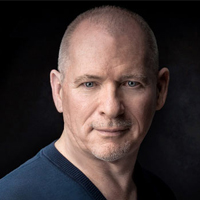“The eyes are the windows to the soul” – William Shakespeare
Writers of speculative fiction portray mind-reading as a superpower. In the real world, reading others is an inborn ability most humans have. We can’t read their minds, but we pick up cues from their non-verbal messaging.
How People Read Each Other
When trying to read someone’s emotions and intentions, their words are usually the place to start. But words may be ambiguous and that’s why body language is important. Gestures, expressions, and a posture give us clues about what others are thinking and feeling. Body language reveals what isn’t said—the tapping of a foot, the crossing of arms, or the furrowing of brows.
The face is often first place we look. A smile indicates happiness or welcome. Lips drawn down suggest sadness, raised eyebrows surprise, while tense lips and knitted brows signal anger. Think of all the idioms relating to the face: long-faced, face like thunder, poker-faced, red-faced, brave-faced, blue in the face, and keeping a straight face. These conjure images of emotion in the mind’s eye.
Humans use body language long before speech. It’s how we first communicate as babies. And for our ancestors, there was an evolutionary advantage to observing it. Survival might have hinged on sensing anger from someone’s posture or frown before they attacked with a rock or a club.
Charles Darwin’s book, The Expression of the Emotions in Man and Animals, suggests that the ability to read emotions from a face aids social interaction, reduces misunderstandings and helps group cohesion. Of course, body language should be hedged with provisos. Not everyone can read it, and there are those whose body language doesn’t always match what they are thinking. It also pays to be culturally smart. Body language isn’t universal and needs to be taken in context. Nodding in Japan shows a person is attentive, not agreeing, and crossing arms may mean someone is cold rather than defensive. Knowing these limitations exist can help us avoid our message not getting across.
The Eyes and Mouth Have it
Researchers based at Bielefeld University in Germany found that humans rely mostly on the eyes and mouth to interpret someone’s emotions. And we detect certain moods from particular parts of the face. Spotting surprise and fear relies on the eyes, while we deduce disgust and happiness from the mouth. That’s why masks impair our ability to communicate. Psychologist Rebecca Brewer of the Royal Holloway University of London writes, “When we cannot see the whole face, such holistic processing is disrupted.” That’s worth reflecting on, when more of us are wearing face coverings against COVID-19 these days.
Communication in the Digital Age
We are communicating more and more by written word in the era of social media. Instant messaging and emailing is quick, it’s convenient, and we can do it 24/7. But you can’t see the person composing the words. You can’t read their body language or hear their tone of voice, and so it’s difficult to know what nuances are behind their writings.
It’s no surprise, then, that emoji have grown so popular. They allow us to communicate body language to someone, even though they can’t see us. They’ve become a substitute for what people have been doing face-to-face for millennia—using expressions and gestures to send out emotional cues. Smiley face, angry face, tears of joy, blowing a kiss, or thumbs up sign—emoji are central to the way we communicate. Susan Herring, a professor of information science and linguistics at Indiana University, called the age of the emoji a “new phase of language development.”
The Writer’s Tool Kit
Body language is something all writers know about. It’s an art we have to master. From the beginning we’re told to follow the golden rule: To “show, don’t tell” a character’s moods and emotions. That means portraying their state of mind in ways that avoid adverbs or adjectives. We can’t tell the reader someone is angry. We must show it through their gestures and expressions by describing their face reddening, throat tightening, voice rising, or their fist slamming the table. If a character is cold, you describe them tugging up their collar, tightening their scarf, or burying their hands in their pockets. These are cues a reader will pick up, because our species is attuned to reading body language. This “showing” style of writing paints a picture a reader can see in their mind’s eye. It makes them part of the experience, creates empathy for the character, and hooks them into the story.
It’s Not What You Say
We grow up thinking speech is our main means of communication. But nothing could be further from the truth. Professor Albert Mehrabian, a pioneer researcher of body language, found that people are better at detecting emotions from a speaker’s tone and non-verbal cues than they are from their words. You only have to look at the acting skills of silent-movie stars. They were pioneers of body language; it was their only way to communicate with the audience. There lies the power of body talk. It reveals more than we say, and it speaks even when our voices are silent.

Stephen Chamberlain is the author of the fantasy novel Graëlfire. He draws inspiration from the impact of landscape on myth, and the association of liminality with the supernatural and magic. Stephen lives in Switzerland.



